I visited a paradise recently. An island named Socotra, main piece of an eponym archipelago. Located between Yemen and Somalia as a natural gateway between the Red Sea and the Indian Ocean, Socotra detached from the mainland Arabic peninsula long time ago. The archipelago is part of today’s Yemen, while perspiring a distinctive perfume.
Socotra in history
Socotra lures sailors, explorers, fishermen, traders, conquerors, military men, pirates and travelers since the Antiquity, owing to its strategic location, its natural endowments and indeed its raw and mystical beauty.
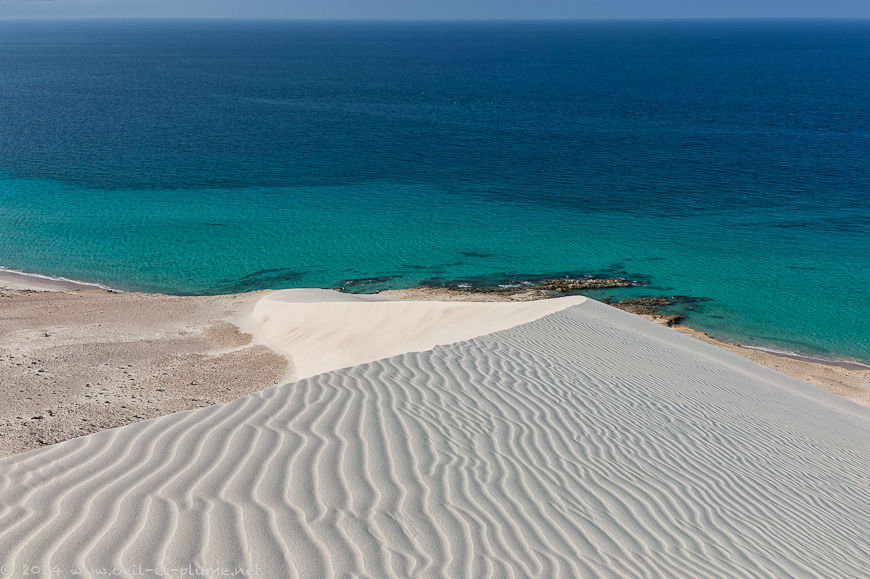
During the Antiquity, Arabs natives of the mainland peninsula north of Socotra, as well as Somalis, western neighbours in the Horn of Africa, settle in Socotra in significant numbers. Indians first, later Egyptians, Phoenicians, Greeks, Romans are other regular foreign visitors and even settlers in Socotra. Advised by Aristotle, Alexander the Great establishes an Ionian colony in the 4th century BCE. On his way to India, Apostle Thomas is shipwrecked in Socotra’s waters in 52 BCE. A community of Nestorian Christians develops in the island to fade slowly with the rise of Islam in the 7th century CE.
More recent history brings to Socotra limited influence from Portugal (15th century), and Great Britain (19-20th century) and then-USSR. However since the 16th century until 1967, Socotra remains essentially part of the Mahra Sultanate until its integration into South Yemen and later into modern-day’s Yemen.
The rise of Islam reorients and multiplies the sea routes around Socotra. Before the 7th century, Socotra is mainly a key stopover on the sea route between Egypt and Greece and the Indian subcontinent. Later on, Arabs from the mainland Arabic peninsula become more present in Socotra and used the island as a platform to explore and trade with east Africa. Black African slaves are eventually shipped to Socotra.
Dragon blood tree and phoenix
Socotra processed its multiple exposures to the outside world over the centuries into a rich socio-cultural blend of history and mythology.
Local legend has it that Cain and Abel are born in Socotra after their parents Adam and Eve have been expelled from the Garden of Eden. Cain and Abel are respectively farmer and lamb shepherd. Jealous about his younger brother, Cain treacherously murders Abel. As punishment, he is then cursed and marked for life by God. Abel’s blood spills into Socotra’s soil and gives birth to a peculiar vegetal essence – the dragon blood tree.

Another local legend poses Socotra as home to the phoenix, drawing upon a mixture of Phoenician, Egyptian and Greek mythology. Every five centuries, the mythical bird burns a funeral pyre of dragon blood tree twigs and incense. A worm arises from the ashes and grow into the new phoenix. The young bird gathers then the ashes of his father and flies them to the Egyptian city of Heliopolis before returning to Socotra.
In a variant of the story above, the medicinal virtues of the Socotri dragon blood tree are known to the outside world as follow. Despaired of curing his severely-ill daughter, an Egyptian king in Heliopolis offers her hand to whoever could help recovering her good health. In love with the princess, a young man cures her illness with some precious resin of Socotra dragon blood tree that he has obtained through the phoenix. Grateful, the Egyptian king holds his word. The young couple marries eventually and lives happily.
Socotra astutely blurs the dividing lines between history and fiction. The Greek philosopher Plato evokes the fictional Atlantis in his dialogues between Timaeus and Critias. Fictional island? Not at all: Socotra is the remnant and the highest part of the submerged Atlantis, argues one researcher.
Far from me to attempt settling here the scientific controversy over the geographical location of the Atlantis, if it ever existed. In any case, the flora and to a lesser extent the fauna of Socotra are awesomely rich and specific. About one third of the vegetal species growing on the island are endemic – to be found nowhere else in the world.
Tracing dragons in Socotra’s highlands
With so many dragon blood trees, Socotra host presumably scores of dragons. I enquire on their whereabouts. There is no dragon in Socotra anymore, I am told locally. Incredulous as reportedly Apostle Thomas, I conclude that the Socotri dragons are on hide since quite a while. Hence, I decide to look for them first in Socotra’s highlands where dragon blood trees prosper.
Tracing the Socotra’s dragons requires extensive local knowledge, strong resilience, as well as adequate logistics. My local companions are the guide Eisa, seconded by Amir and Abdulrahman, the camel driver and his assistant. Not to mention Chira, a massive camel tasked to carry our food and camping equipment. Chira is ‘one hundred years old’, claims Amir who inherited the animal from his grandfather. Chira’s smily face and good mood are legendary in Socotra.
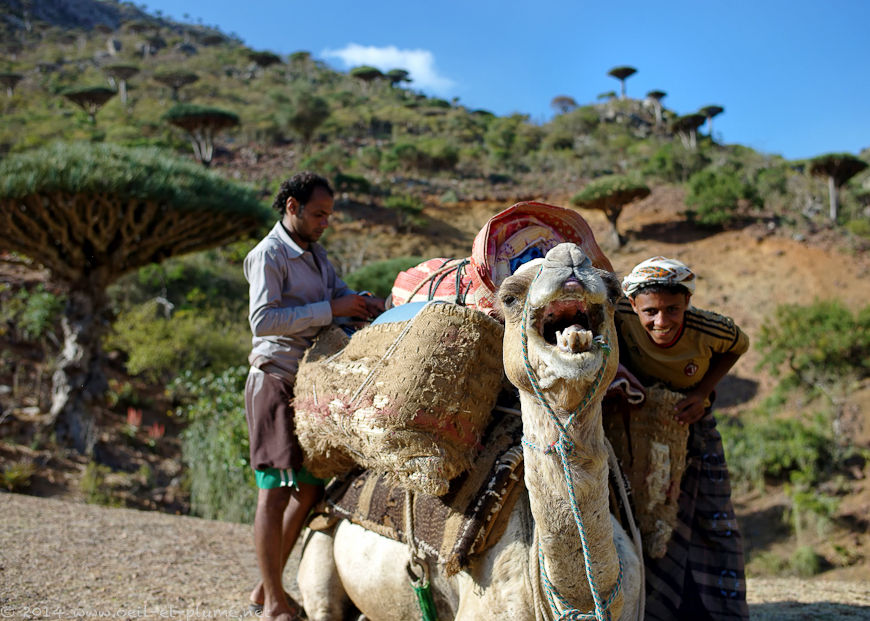
Day 1
We are bound to spend fours days in the mountains. The trek starts early in the morning, but not early enough to escape the heat which is only marginally tempered by the cloudy sky. Never mind, the path goes stubbornly up and up. Following a long midday break, we reach our destination of the day by late afternoon. The mineral and vegetal scenery is grandiose, propitious to a memorable camping experience.
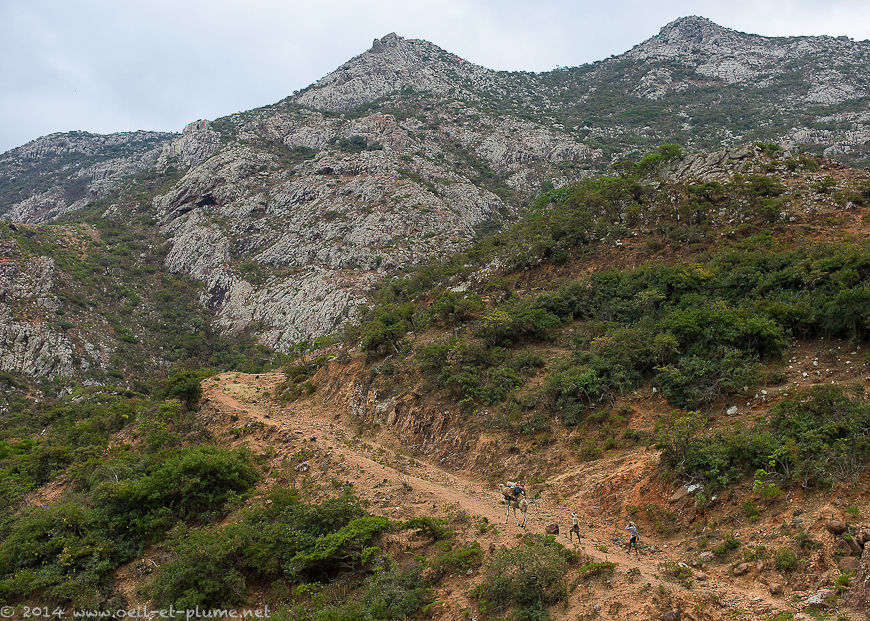
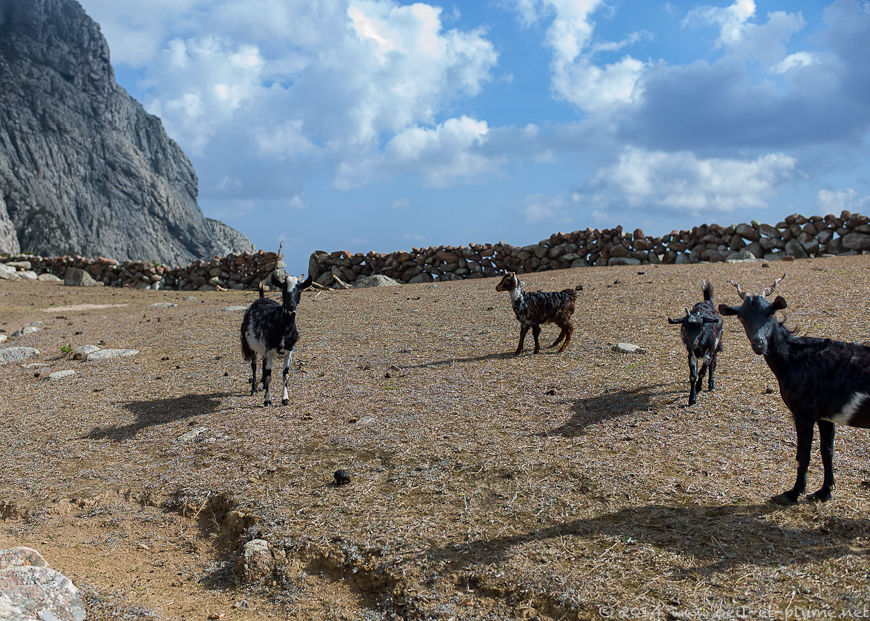
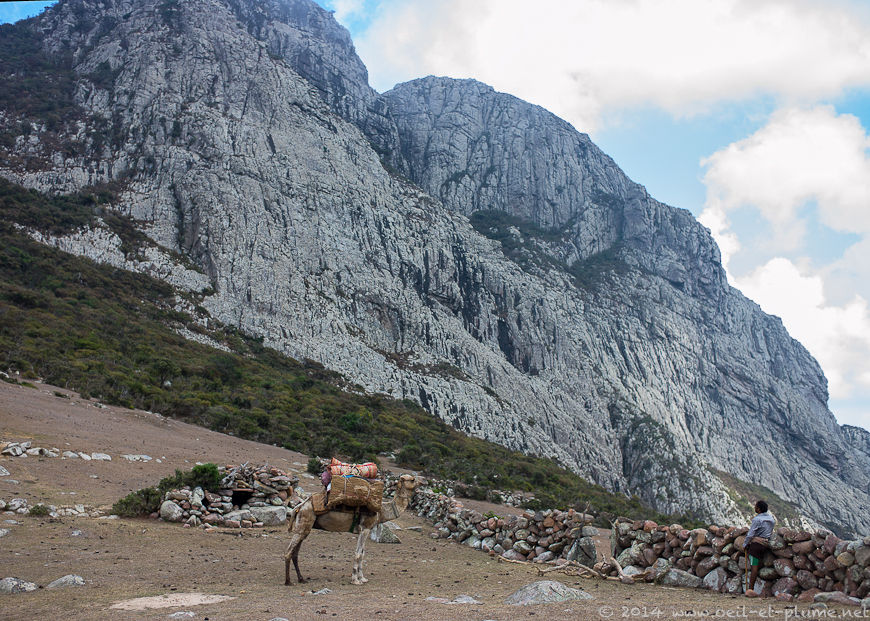
Day 2
After a cold night under the stars, the morning’s light only confirms the stunning beauty of the landscape. Eisa and myself continue up to the highest mountains of the island in Haigar area, while the Chira and its drivers will pursue their journey on the other side of the pass.
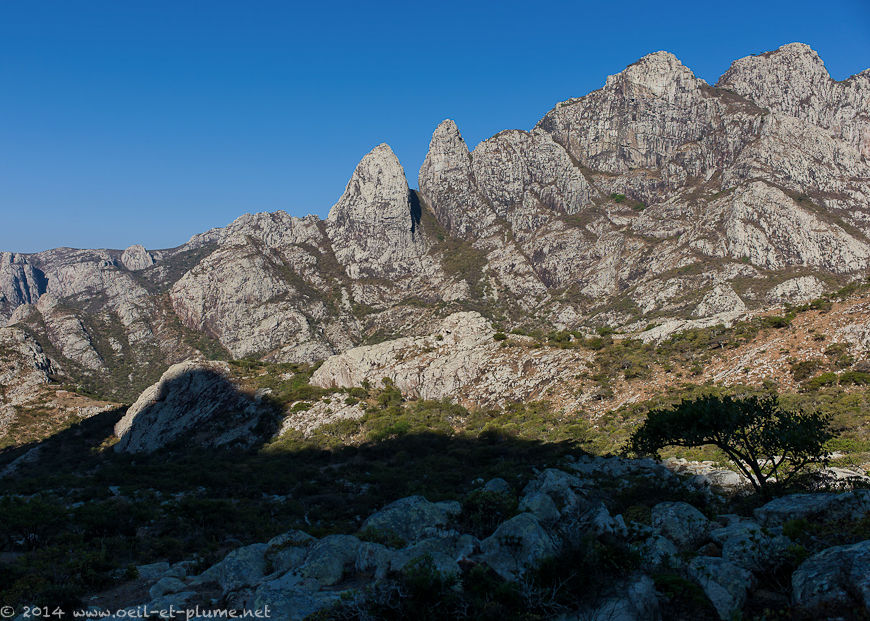
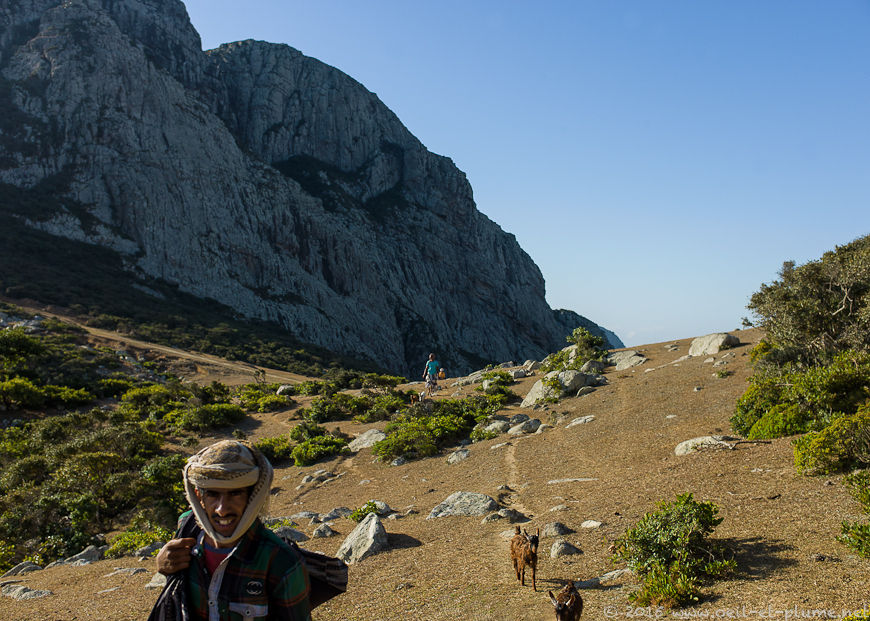
Socotra’s highlands are located in the centre of the island. Bedouins sparsely populate the mountainous area. They rear goats, sheep and cattle for meat and milk, and donkeys as pack animals. Animal husbandry is far more than just the main activity and the main form of economic asset of the Bedouins. Animals constitute their passion and their pride.
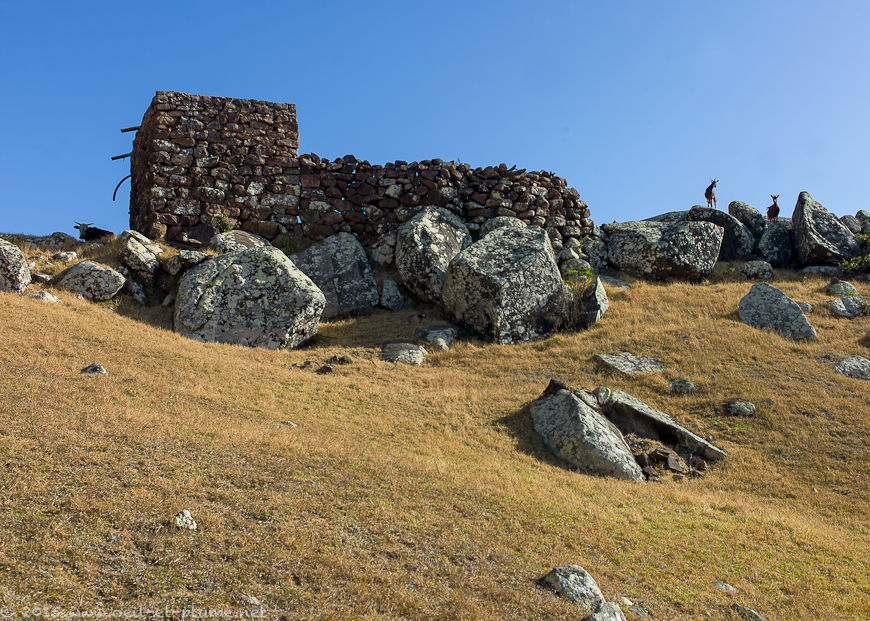
After a speedy trekking straight up, we reach Haggier area – the highest point in Socotra. This is a grandiose decor indeed. Local shepherds stop their cow milking session to welcome us with milk tea. Don’t even try to decline sipping the heavy and sweet drink. Local custom would consider it as an offense.

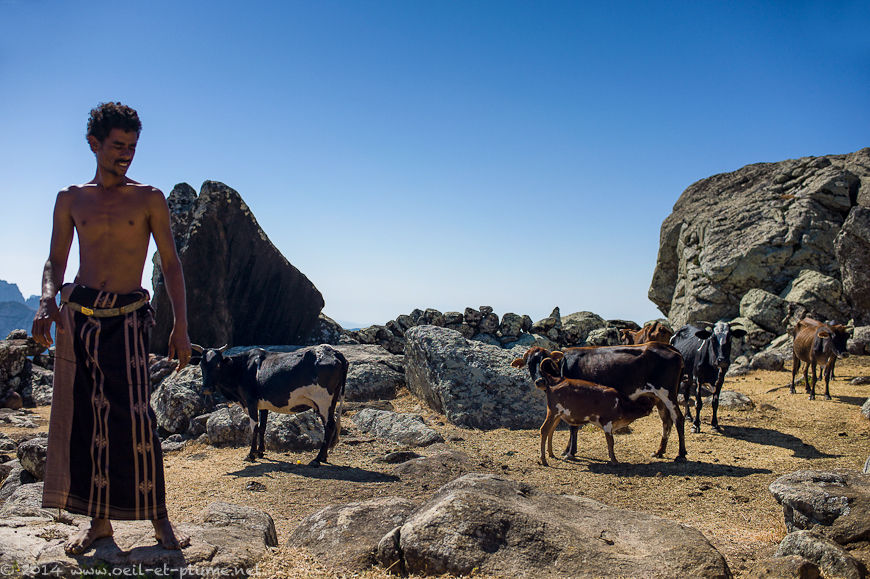
The young Bedouins spend the summer there, banking on fine weather and abundant vegetation to feed their cattle and goats. They live in very basic conditions. The area hosts also permanently dozens of Bedouin families who live in a scattered pattern typical of pastoralists. Complex traditional rules define the smooth management of livestock, the access to pasture as well as the water and dry season fodders.

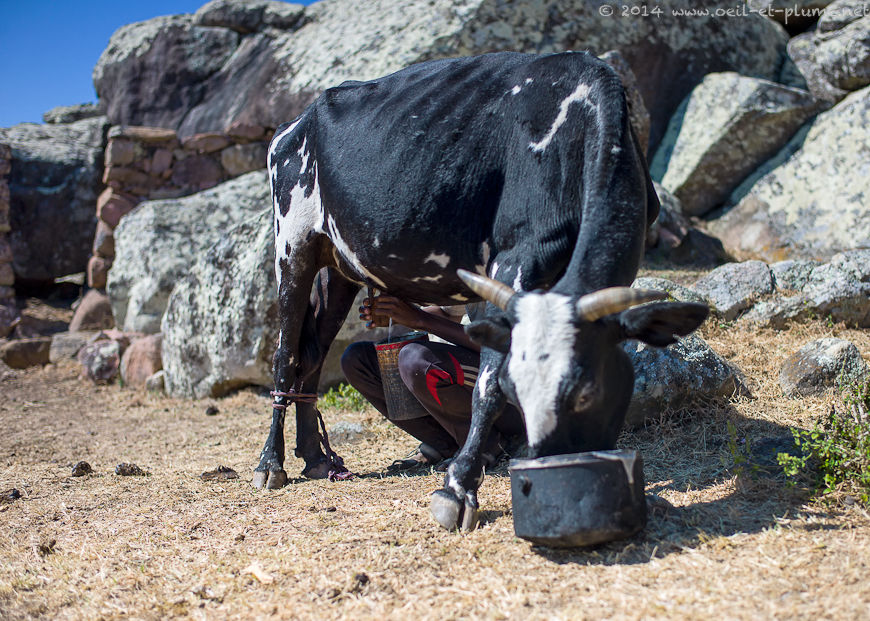
One Bedouin approach us to sell a young goat. Despite a long negotiation carried out while sipping a milk tea, the deal is not reached. I am relieved, uneasy with the idea to kill that kid for our food. We will keep eating our canned tuna fish.
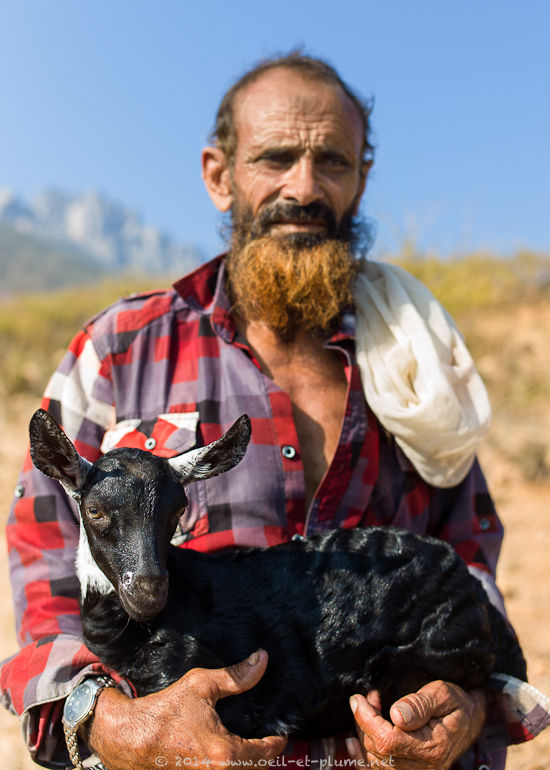
We push up to the verge of the cliff overlooking Hadibo. One of the young Bedouins confesses longing to return to Hadibo, Socotra’s capital, where he lives most of the time. Short of mobile phone, he’s offered a phone call to his family in Hadibo by my guide Eisa from this breathtaking location. Unlike the rest of Haggier mountain range, the very verge of the cliff is connected to the cellular phone network.

We leave Haggier area soon after, as there is no visible or reported trace of the dragons there. Never mind, it was a great Bedouin experience.
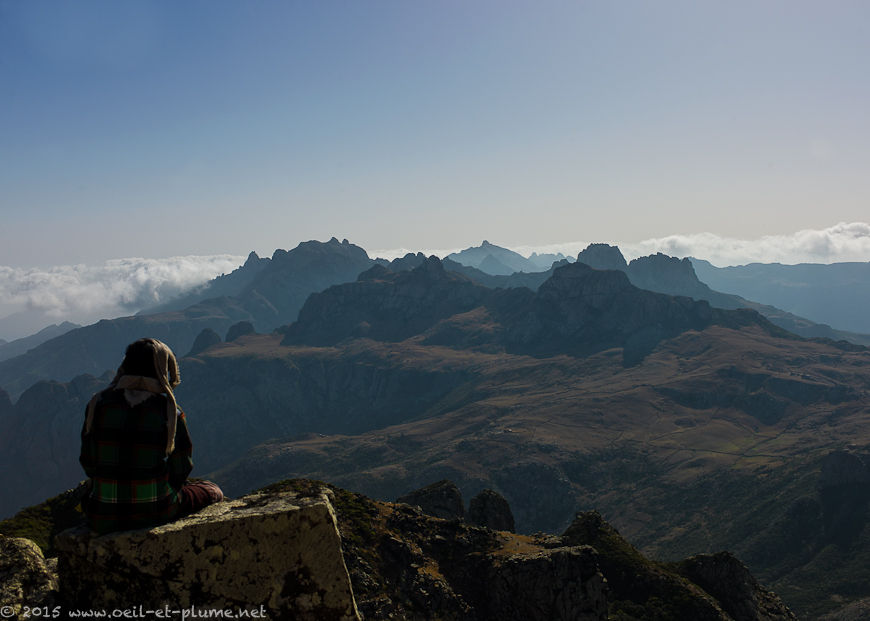
Eisa and I run down to the pass where we spent the night, cutting short meanders of the path and jumping rocks. However, there is always the time to enjoy the beautiful landscape.
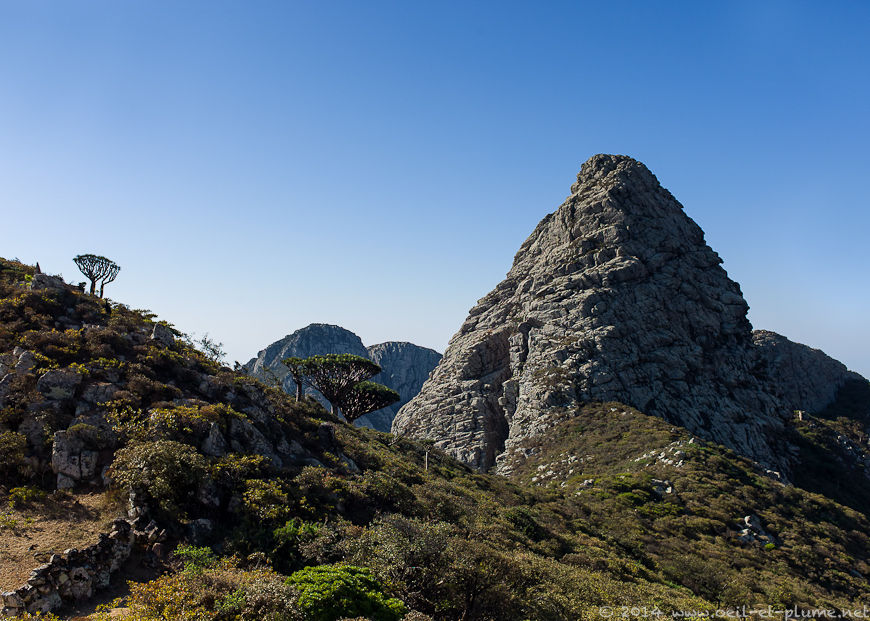
Once in the pass, we grab some water left by our camel drivers and pursue down into the valley to catch them up. The junction is made shortly before midday in an unbearable heat. A bath in the river cools me down, while the lunch boost my hunting spirit.

In the afternoon, we have a long, long trek in a tortuous valley until sunset. Tomorrow we will cross an area full of dragon blood trees, announces my guide.
Day 3
On the next morning, the collective mood of the team is high, except for Chira indeed. Every time the path runs upwards, the camel turns slow, screaming loud despite panting for breath. There are good reasons for Chira’s uncooperative behavior indeed. The mountainous terrain is not exactly the favourite environment of a camel. However, stopping here and there, the pack animal makes its way to the top, guided and stimulated by his driver Amir.

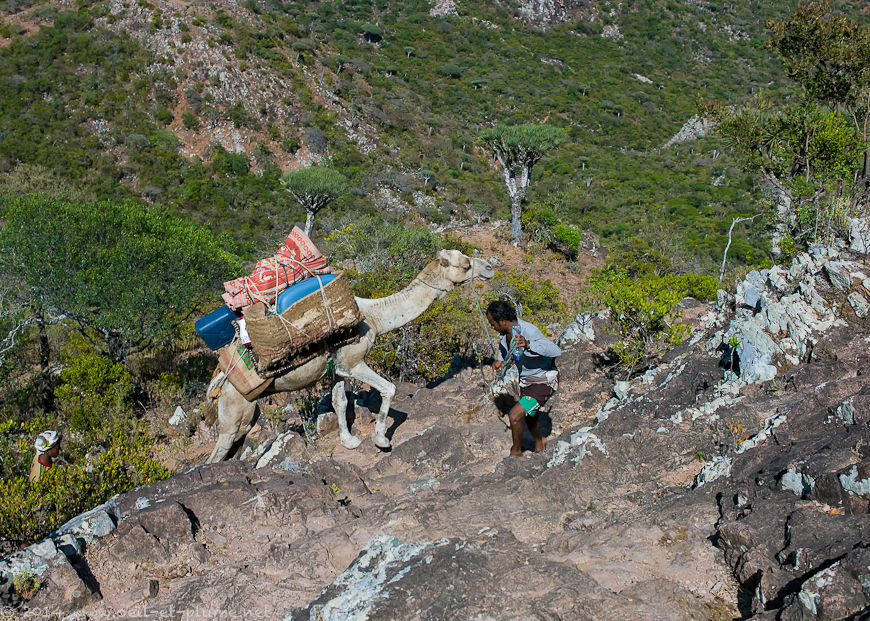
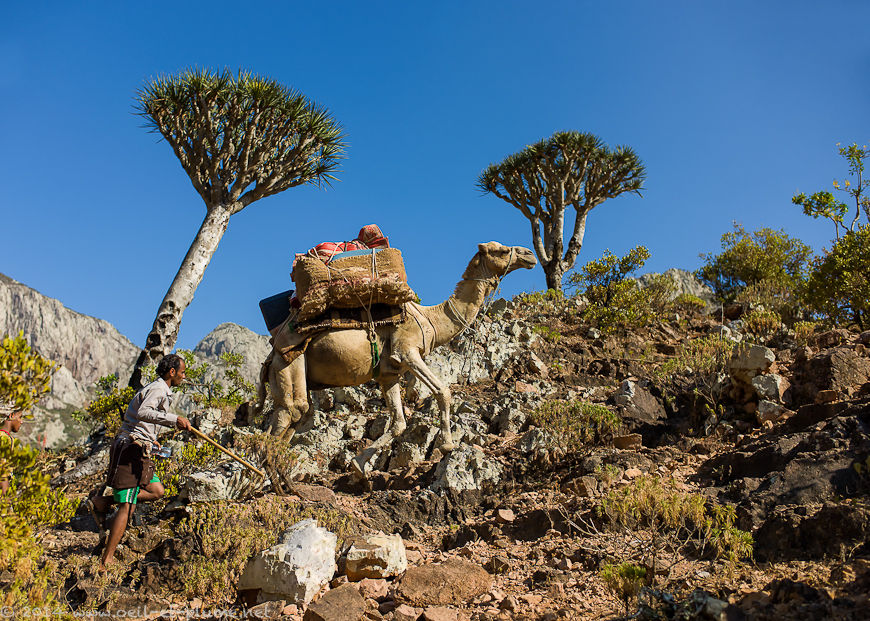
On the other side of the mountain opens up a valley covered with dragon blood trees. A vegetal festival of venerable representatives of Dracaena cinnabari. The dragon blood tree grows very slowly. Young trees are highly vulnerable to grazing by goats and other grazing animals. This is why the dragon blood tree is best found in remote and inaccessible locations. The umbrella-shaped vegetal crown helps the dragon blood tree coping with the arid and rocky soil typical of mountaintops.
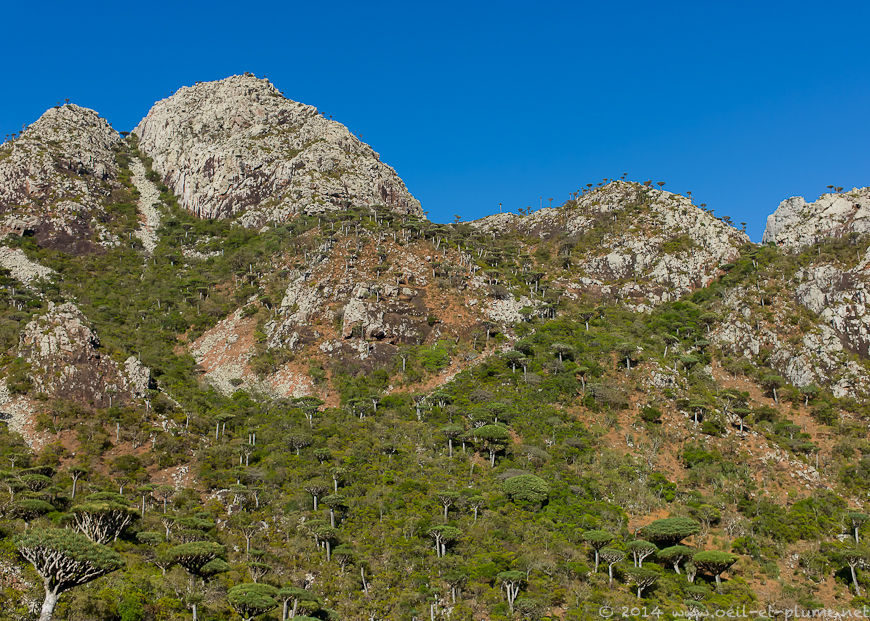

All of the sudden, Eisa and I come across a stone tainted with dragon blood – an irrefutable piece of evidence of the presence of the wild and elusive animal in the area. Dragons, here they are!
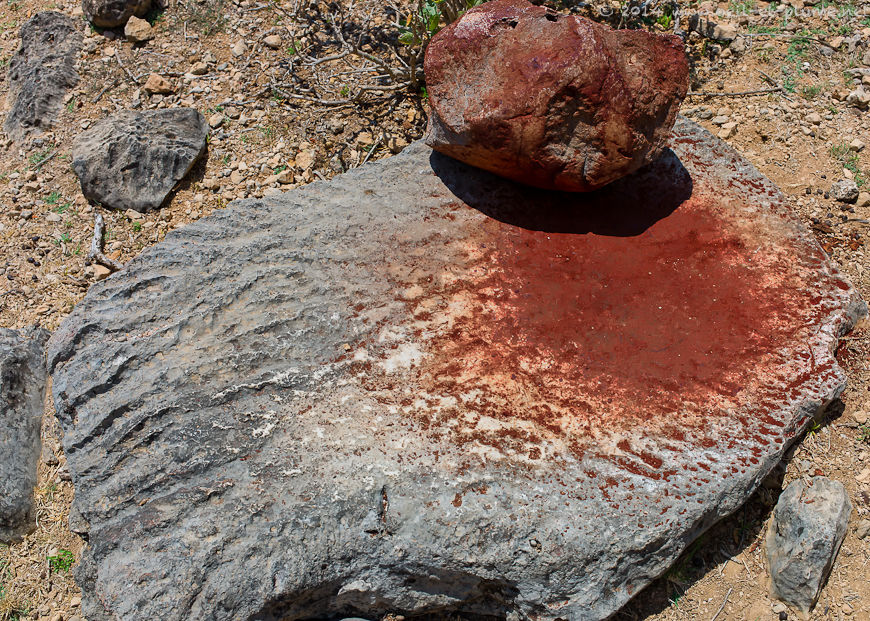
The red resin of the dragon blood tree is used in multiple forms: as a cure-all medicine primarily, but also to dye wool, to glue pottery or as cosmetics including lipstick, not to mention ritual magic and alchemy. Furthermore, the red resin of the dracaena cinnabari is used as a varnish component by Italian violinmakers since the late Renaissance. Yes, your Stradivarius is most probably varnished with Socotri dragon blood.
Nearby, a beautiful specimen of aloe vera shines to my eyes. No need to expose here the medicinal and cosmetic virtues of aloe. The merits of aloe vera are also scientifically challenged to a certain extent.

The valley hosts also beautiful frankincense trees – another natural endowment and a traditional economic resource of Socotra. Those are much larger than the ones that I saw in Oman. By the way, the etymology of Socotra derives most probably from the Arabic/Socotri words ‘suq’ and ‘qotra’, meaning ‘market of dripping frankincense’.
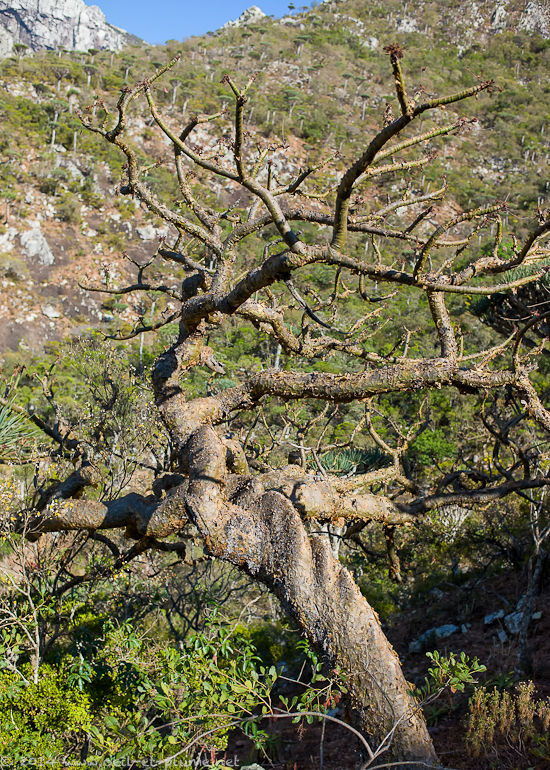
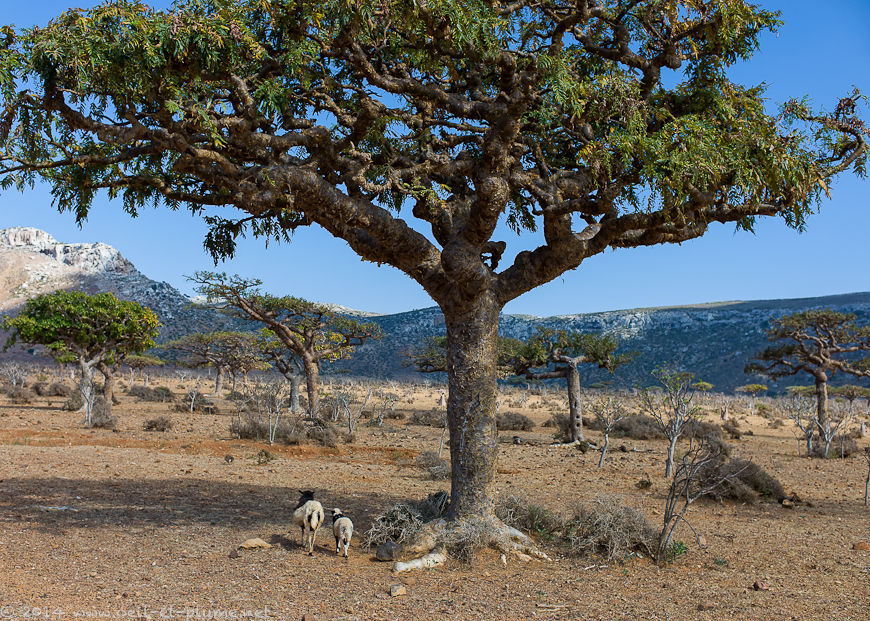
Socotra’s dragon trees face a growing climatic threat: the gradual drying out of the archipelago over the last centuries, against which the bottle trees below are best prepared to resist. As its name suggests, the bottle tree is hollow, in order to store water during the monsoon seasons.
My camera soon falls in love with the odd but wise vegetal specie daring the most improbable trunk shapes. Despite their belly shape, those specimens pose elegantly in front of my camera, all the more adorned with delicate pastel flowers.
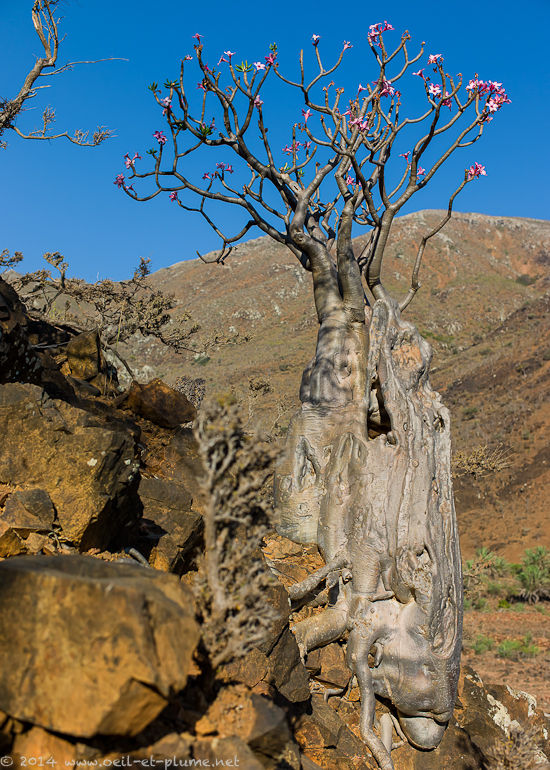
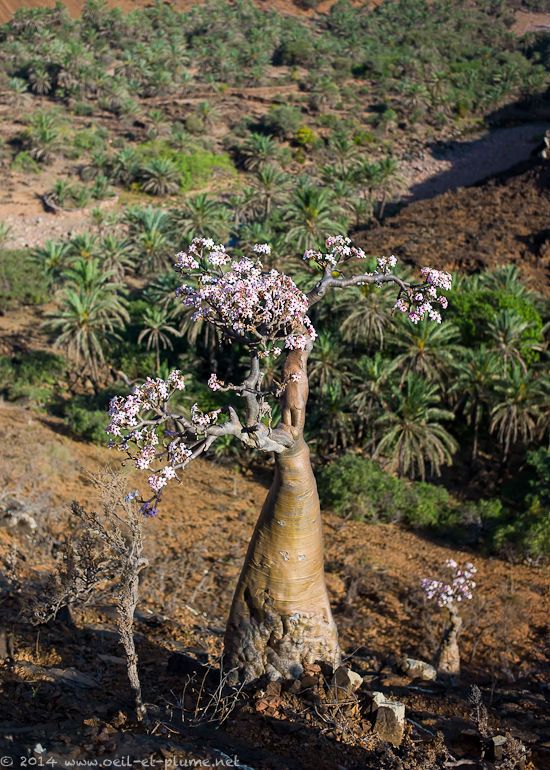



Pursuing our search, we reach our camping site in late evening, right on a small sandbank of a riverbed. I do not have a memorable souvenir of that night, unfortunately. A young goat is purchased locally, killed and grilled for our dinner.
Day 4
We start our forth and last day of tracing dragons in Socotra’s highlands. I collected so far no evidence of their presence, except for a large stone tainted with some of their blood. My guide Eisa and myself split again from the camel Chira and its drivers in order to reach quickly the high plateau of Farmhin. As the plateau hosts thousands of dragon blood trees, it is likely to hide the elusive wild animals as well.
From the bottom of the valley, we cross a palm tree plantation before engaging into the stiff mountainous slope. The path is as dry up as the surrounding landscape. The sun hits hard, despite the early hours of the morning. We finally reach Firmhin plateau. Crossing the rather flat area takes us hours, during which I cross too many dragon blood trees, but no dragon.
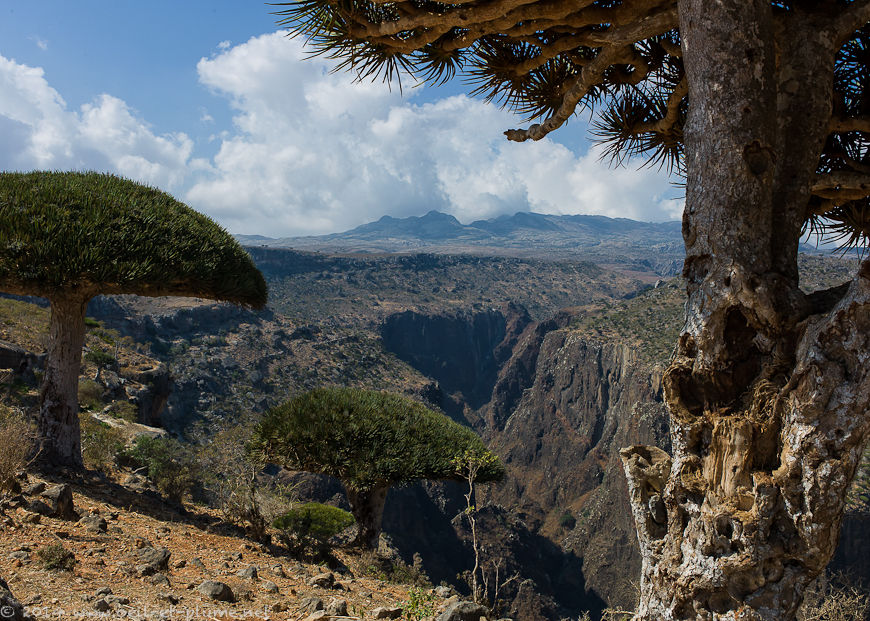
However, I am lucky enough to spot and approach the famous phoenix. More curious than shy or afraid, the mythical bird invites me to climb onto the dragon blood tree where it rests. Asked on the whereabouts of Socotra’s dragons, the bird replies elusively that they hide where barely anyone would expect to be. ‘I crisscrossed the highlands to no avail’, I complain. ‘Then look for them on the northern seashore’, whispers finally the phoenix before vanishing in the air.

At least the phoenix confirmed me that Socotra still hosts dragons, I think. And the island has so many charming locations to enjoy. Anticipating the end of the four-day trek as we approach the seaside, even the irritable Chira feels happy. Me too. Further down in Derhur canyon, I don’t resist jumping into a colourful pond.
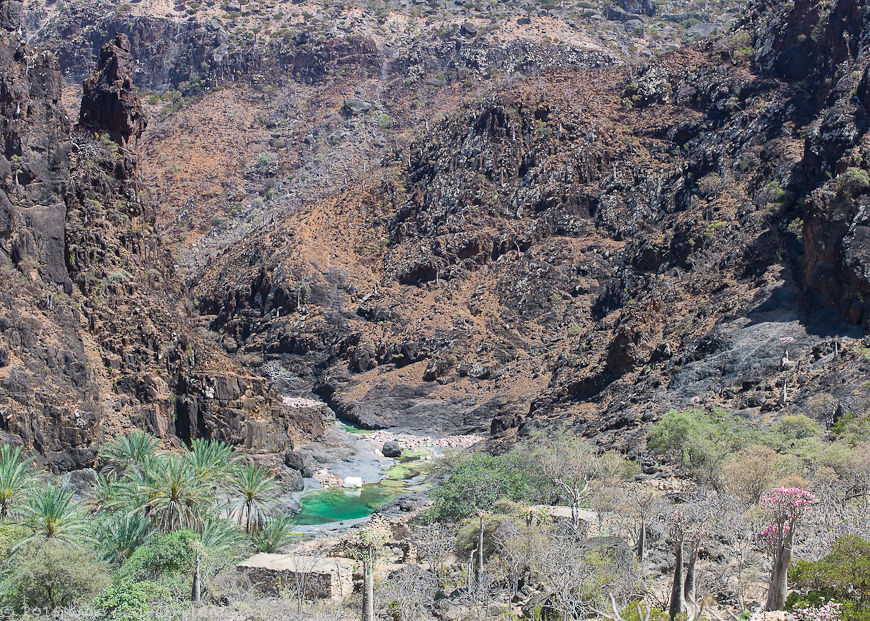

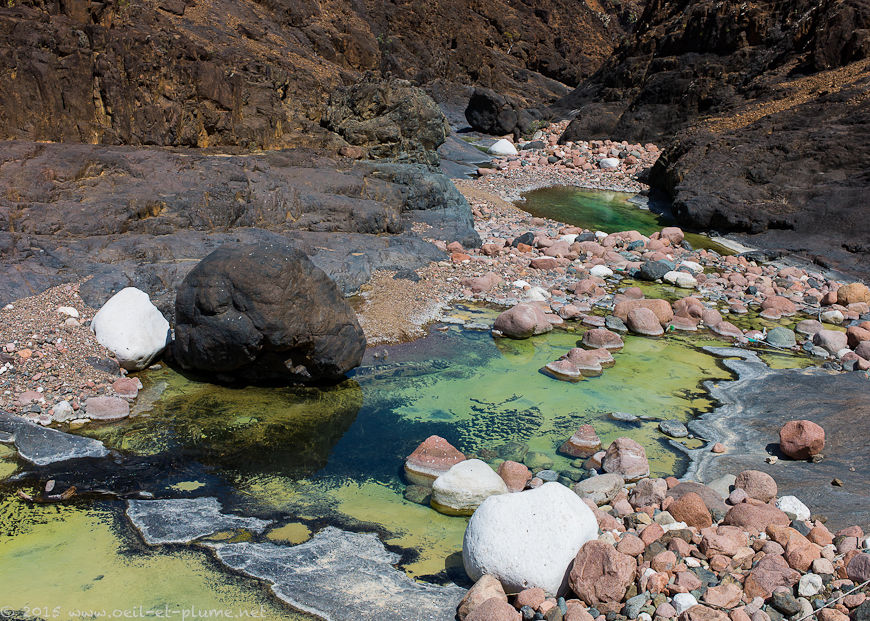
The call of Socotra’s shores is now stronger. We set off again, not long before reaching a beautiful natural pool with a stunning sea view.
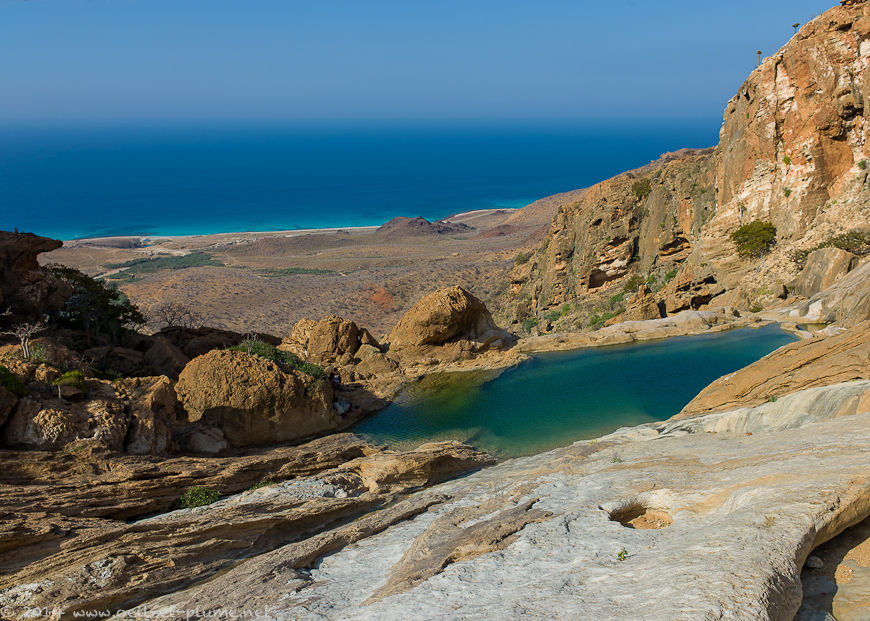
The refreshing bath also sharpens my hunting spirit. Starting from tomorrow, I will trace Socotra’s dragons along the northern shores of the main island.
Cheers,
To be continued,